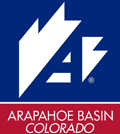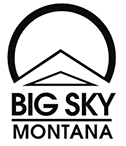A Guide to Many Happy Returns
Safety is no accident, as the old industrial work-place motto goes, and the same holds true with skiing and snowboarding.
Every year hundreds of injured wintertime frolickers are carted off North American mountain resorts on a daily basis, and many of them could have prevented the trip to the local clinic or emergency room if they had taken steps to ensure their day on the hill would be more pleasant than painful. (On a more grisly note, there is an average of 38 deaths a year at the 460 resorts in the U.S. and a similar number of catastrophic injuries, i.e., paralysis, broken necks, severe head injuries.)
To that end, the National Ski Areas Association, a trade association for 313 resort owners and operators (that’s 90 percent of the U.S. market), has dedicated January as National Safety Month, wherein ski hills across the country participate to educate skiers and snowboarders about being safe and to use common sense on the slopes.
Know the Code
Many of the resorts under the NSAA umbrella will have some sort of program or contest that emphasizes the need to be mindful of your — and others’ — safety. The most common — and probably most ubiquitous — method of the getting the word out is the NSAA’s Responsibility Code:
Always stay in control.
People ahead of you have the right of way.
Stop in a safe place.
Whenever starting downhill or merging, look uphill and yield.
Use retention devices to prevent runaway equipment
Observe signs and warnings.
Know how to use the lifts safely.
These seven steps, however, are just the basics; they simply lay the foundations for all aspects of on-hill safety.
Other considerations
Other ways to make sure that your day on the hill will be memorable for the thrills rather than the ills are to be properly dressed (layering is the best way to go); have properly tuned and dependable gear; take a few lessons; wear a helmet and, for you snowboarders, wrist guards; stay hydrated — and that doesn’t mean with alcohol, no matter how watered down it is — and know your limits.
This winter has been especially fierce, particularly in the West, with places such as Crested Butte, Jackson Hole, Squaw Valley, Mammoth Mountain and Whistler Blackcomb having their fair share of the steep and deep option. But though in-bounds avalanche danger is relatively rare — thanks, ski patrol! — the tons of snow that have fallen in the Sierra, Rockies and elsewhere have produced a seemingly above-average number of avalanches catching, and in some cases killing, backcountry skiers and snowboarders.
So it is imperative that you be avalanche aware and prepared. Take a course or two in avalanche safety; wear some sort of beacon; carry a shovel and a probe, and always, always ski or ride with a buddy.
It can be a dangerous world out there in ski and snowboard land. It’s up to you to do your best to mitigate that danger.
Featured Resorts

Killington Resort

Pico Mountain

Mammoth Mountain

Palisades Tahoe

Arapahoe Basin

Aspen Snowmass

Sugarloaf

Sunday River

Big Sky

